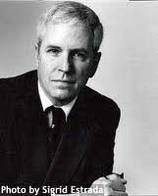REBELLION ROAD
A Novel
Joe Ryan
Rebellion and revolution, freedom and bondage, sovereignty and subjugation: these are the competing human conditions that fill the scenes in the novel Joe Ryan has written about the American Civil War. The story—true to the material facts of history—begins as Abraham Lincoln takes possession of the Presidential Chair, tricks the Confederate Government into bombarding Fort Sumter, and seizes upon the power of the Union to come within a hair's breath of knocking Virginia quickly out of the war, only to be thwarted at the last possible moment by the sudden appearance in the field of General Lee. The story then gives the reader the amazing chronicle of Lee's army that follows: Lee maneuvering three Union armies out of Virginia, marching in the process from the Chickahominy to the Potomac, and, then, risking his exhausted army's annihilation, he maneuvers McClellan into fighting the Battle of Antietam on Constitution Day—inducing Lincoln, who now sees the long slog of horror that lies ahead, to throw down his last card.
Joe Ryan, a Los Angeles trial lawyer, has written extensively about Lincoln, Lee, and the Army of Northern Virginia; his writings are based upon a thorough investigation of the records of the Rebellion which exist in the National Archives, the Library of Congress, the Virginia State Library and the Southern Historical Collections of the University of North Carolina at Chapel Hill and the Virginia Historical Society in Richmond. Since 1980, Mr. Ryan has traveled over all the old roads that Lee's army walked on, from the Richmond battlefields, through Northern Virginia and the Shenandoah Valley, to the field at Gettysburg.
Kindle Title Buy Now
|
 “The book opens well: we are right there with Lincoln, in his head, experiencing the wonderful details of his experience in a way that only can come from a confident, knowledgeable historian with the nerve of a fiction writer. And you do this over and over again in the book—and you don’t need me to list those scenes, because they are uniformly good and entertaining and well written.” (Michael Strong, Regal Literary) “The book opens well: we are right there with Lincoln, in his head, experiencing the wonderful details of his experience in a way that only can come from a confident, knowledgeable historian with the nerve of a fiction writer. And you do this over and over again in the book—and you don’t need me to list those scenes, because they are uniformly good and entertaining and well written.” (Michael Strong, Regal Literary)
|
 “There is some really splendid writing to be found here. It is a superb piece of work. I will carry images evoked by the narrative in my memory for a long time to come. This is a far more complex and demanding book (because of the brilliant detail) than, say, The Killer Angels. It gives us a (if not the) pivotal state of the war in the East.” (James O’Shea Wade, Vice President, David McKay Co.), editor and publisher of The Killer Angels, in 1974 “There is some really splendid writing to be found here. It is a superb piece of work. I will carry images evoked by the narrative in my memory for a long time to come. This is a far more complex and demanding book (because of the brilliant detail) than, say, The Killer Angels. It gives us a (if not the) pivotal state of the war in the East.” (James O’Shea Wade, Vice President, David McKay Co.), editor and publisher of The Killer Angels, in 1974
|